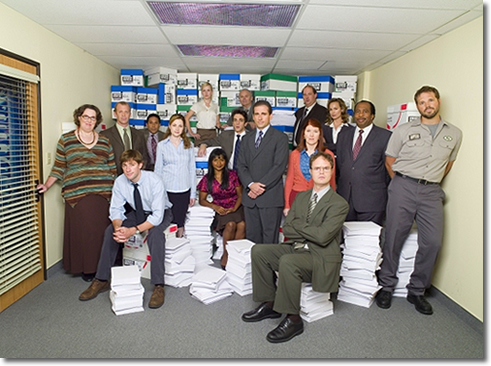 “The Office” is easily one of the most popular shows on television today. Part of its popularity is due to the sometimes uncomfortable jokes and situations that arise out of Michael Scott’s incompetence and insensitivity. These awkward moments often involve sexual orientation or race, but gender is also a topic that is explored by Michael and his staff.
“The Office” is easily one of the most popular shows on television today. Part of its popularity is due to the sometimes uncomfortable jokes and situations that arise out of Michael Scott’s incompetence and insensitivity. These awkward moments often involve sexual orientation or race, but gender is also a topic that is explored by Michael and his staff.“The Office” does its part to perpetuate gender stereotypes, but it also shows us how traditional gender roles are changing. And the fact that we, as an audience, are able to laugh at Michael’s total lack of sensitivity towards gender issues shows that, as a society we are able to recognize inappropriate behavior and can find humor in its awkwardness.
Viewers of “The Office” are probably most familiar with gender issues through Michael’s sexist “that’s what she said” jokes, which has been a recurring theme throughout the series. Michael’s use of this junior-high school type joke is generally quite inappropriate for typical work place environments, and they tend to portray women as sexual objects.
While jokes like these tend to be more in line with how gender was viewed in the past, “The Office” doesn’t necessarily view women in this out-dated sense all of the time. According to David Gauntlett in his text Media, Gender and Identity: An Introduction, in the past, “Female characters were unlikely to work, especially not if they were wives or mothers, and even when they did this work was not typically seen on screen” (47). However, the main setting of “The Office” is a work environment, and several women are portrayed. Phyllis, Meredith, Pam, Kelley and Angela are all portrayed as working women. It is interesting that of these women, only Meredith has children. And not only are these women shown in a work setting, some of them are shown to have more authority than men, a view of gender which would not have been shown in earlier decades. In the first few seasons, Michael’s superior, was Jan, who was portrayed as a smart business woman, and Angela is the head of the accounting department. However, Pam is the receptionist, a traditionally female role.
“The Office” also includes Oscar, an accountant who is openly gay. According to Gauntlett, “For years, lesbians and gays were invisible, and even now . . . these instances are exceptional and the majority of TV programs have featured and continue to feature, a seemingly all-straight set of characters” (92). While “The Office” includes a homosexual character, viewers who have not seen the episode in which Oscar “comes out” may not realize that he is gay, and Gauntlett and other media scholars may still see him as “invisible.”
Toby is also an interesting character to study in terms of gender roles. Toby is a divorced single-father, which is a role that men do not normally play in television sitcoms. In the past, “men were more likely to be assertive (or aggressive), whilst women were much more likely to be passive,” according to Gauntlett (47). However, Toby is a very passive character and not assertive at all. He rarely gets angry or emotional, and the rare occasion when Toby did show anger, it was a surprise to many viewers.
Although we can see that gender roles in “The Office” have not conformed to some of the stereotypes seen in television from earlier decades, we can see that some of these views of gender still exist. The most prevalent example is the separation of the warehouse workers and the office workers. Most of the characters that work in the warehouse on “The Office” are males, because this is a traditionally male job. It requires heavy lifting and manual labor, which conforms to the stereotype of a male job.
We can see that “The Office” conforms to many of the stereotypes of gender that have been perpetuated in the media for decades, however the show’s writers do this mainly for comic effect. The fact that the audience is able to laugh at the uncomfortable situations created by these out-dated stereotypes shows that we recognize that gender roles and stereotypes are changing and will continue to do so.

No comments:
Post a Comment